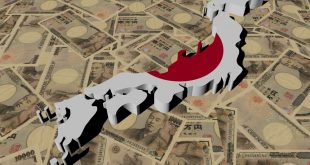The U.S. dollar remained relatively unchanged on Monday as investors awaited crucial events set to shape market expectations in the coming days. With Tuesday’s deadline looming for Washington and Beijing to finalize a tariff deal, alongside a key U.S. inflation report, the currency remains in a holding pattern ahead of these developments. The report could play a significant role in determining whether the Federal Reserve decides to lower borrowing costs next month.
The dollar index slipped slightly by less than 0.1% to 98.164, following a 0.4% drop the previous week. Against the Japanese yen, the U.S. currency traded at 147.39, down 0.2%, with Japanese markets closed on Monday for the Mountain Day holiday.
In the European market, the euro saw a modest gain of less than 0.1%, reaching $1.1652, while the British pound remained steady at $1.3462.
The dollar has faced headwinds recently as investors recalibrate their expectations for potential interest rate cuts by the Federal Reserve. This adjustment follows weaker-than-expected U.S. jobs and manufacturing data, which have raised concerns about the strength of the labor market.
Federal Reserve officials have expressed growing unease about the current state of the job market, signaling the possibility of a rate cut as soon as September. Cooling inflation could solidify expectations of a rate cut, but if signs emerge that U.S. President Donald Trump’s tariffs are contributing to price increases, the Fed may choose to hold rates steady for now.
Francesco Pesole, FX strategist at ING, pointed out, “It’s important to note ahead of tomorrow’s data that the bar for a hawkish surprise is higher.” He added that a 0.3% monthly increase in core CPI would provide the Fed with the flexibility to lower rates, especially given the weakening labor market.
Economists surveyed by Reuters predict a 0.3% increase in core CPI for July, which would push the annual rate to 3%.
Money market traders are pricing in a roughly 90% chance of a rate cut next month, with 58 basis points of easing expected by year-end, which implies two quarter-point cuts and a one-in-three chance of a third cut.
Personnel changes at the Federal Reserve have also been a factor weighing on the dollar, as President Trump is preparing to appoint new rate-setters who align with his dovish views on monetary policy, including a potential new Fed chair when Jerome Powell’s term ends in May.
 Noor Trends News, Technical Analysis, Educational Tools and Recommendations
Noor Trends News, Technical Analysis, Educational Tools and Recommendations





